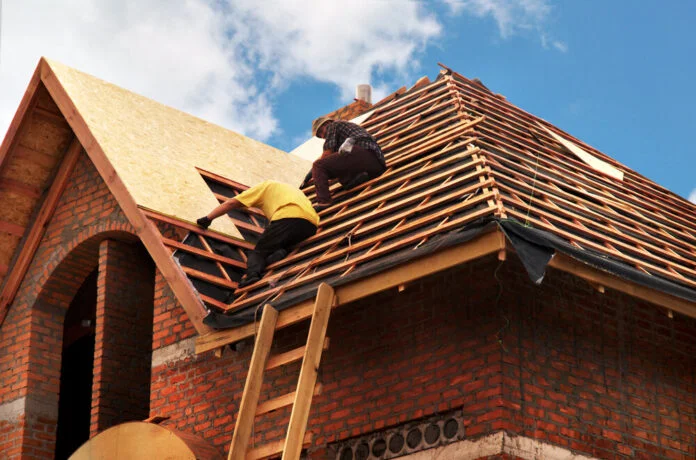If you’re embarking on a roofing project, one crucial decision you need to make is choosing the right roof underlayment. While often overlooked, roof underlayment plays a vital role in protecting your roof and enhancing its longevity. In this comprehensive comparison, we will delve into the various types of roof underlayments available, their features, benefits, and which ones suit different roofing materials and climates. Armed with this knowledge, you’ll be equipped to make the best decision for your roofing needs.
Understanding Roof Underlayment
Before we dive into the comparisons, let’s understand what roof underlayment is and why it’s essential. Roof Underlayment is a protective layer that is installed between the roof deck and the roofing material itself. It acts as a secondary barrier against water infiltration, helps prevent leaks, and enhances the overall weatherproofing of your roof.
Types of Roof Underlayment
Asphalt-Saturated Felt Underlayment: This traditional and widely used underlayment is made from organic materials or fiberglass. It is coated with asphalt to make it waterproof. It offers good protection against water and serves as an excellent vapor barrier.
Synthetic Underlayment: Modern advancements have given rise to synthetic underlayments made from polypropylene, polyethylene, or other polymers. These underlayments are lightweight, durable, and offer better tear resistance compared to traditional felt.
Rubberized Asphalt Underlayment: This type of underlayment is self-adhering, which eliminates the need for nails during installation. It provides excellent waterproofing and works well in areas prone to extreme weather conditions.
Non-Bitumen Synthetic Underlayment: Engineered with materials like polyethylene or polypropylene, this underlayment is highly resistant to mold and offers superior traction for roofers during installation.
A Comprehensive Comparison
1. Waterproofing Abilities
When it comes to protecting your roof from water damage, the waterproofing capabilities of the underlayment are crucial. Both traditional asphalt-saturated felt and synthetic underlayments offer reliable waterproofing. However, rubberized asphalt underlayment takes it up a notch with its self-sealing properties, providing an extra layer of protection against leaks.
2. Durability and Tear Resistance
For long-lasting roofing protection, you want an underlayment that can withstand the elements and resist tears during installation. Synthetic underlayments are known for their exceptional durability and tear resistance, making them an ideal choice for areas with extreme weather conditions or when using heavy roofing materials.
3. Climate Suitability
Consider the climate in your region when choosing the right underlayment. In hot and humid areas, non-bitumen synthetic underlayments excel due to their mold-resistant properties. In colder regions, rubberized asphalt underlayment performs well, thanks to its flexibility in low temperatures.
4. Installation Ease
Roofing projects can be time-consuming, so having an underlayment that’s easy to install is a significant advantage. Rubberized asphalt underlayment, being self-adhering, offers the easiest and quickest installation process, while traditional felt and synthetic underlayments may require additional fastening.
5. Weight and Environmental Impact
If you’re concerned about the environmental impact of your roofing materials, synthetic underlayments are a sustainable option. They are lightweight, reducing the overall load on your roof, and are often made from recycled materials.
6. Compatibility with Roofing Materials
Certain underlayments work better with specific roofing materials. For instance, synthetic underlayments are an excellent choice for metal roofing due to their non-corrosive properties. On the other hand, traditional asphalt-saturated felt underlayment pairs well with asphalt shingles.
7. Cost Considerations
While cost shouldn’t be the sole deciding factor, it is an essential aspect to consider. Asphalt-saturated felt underlayment is often the most budget-friendly option, making it an attractive choice for homeowners on a tight budget. Synthetic underlayments and rubberized asphalt underlayments may be slightly more expensive, but their durability and performance justify the investment.
Conclusion
Choosing the right roof underlayment is a critical step in ensuring the longevity and protection of your roofing system. While traditional asphalt-saturated felt underlayment has been a reliable choice for many years, modern advancements have introduced more durable and efficient options like synthetic underlayments and rubberized asphalt underlayments. Each type has its own set of advantages, so it’s essential to assess your specific roofing needs and climate before making a decision. VCI Woven Fabrics are a cost-effective solution that ensures your metal goods remain corrosion-free without compromising quality.
Remember, a well-installed and suitable roof underlayment will not only shield your home from water damage and leaks but also contribute to the overall energy efficiency and comfort of your living space. So, take your time, do your research, and consult with a roofing professional to make an informed choice. Happy roofing!

